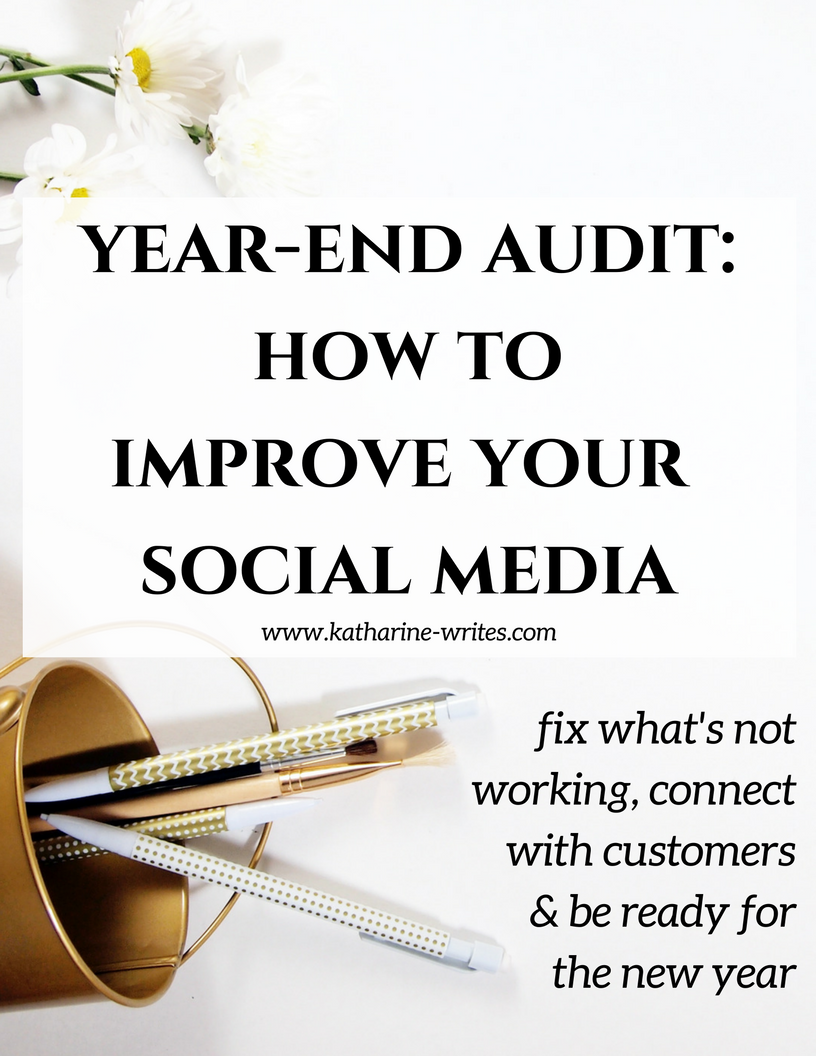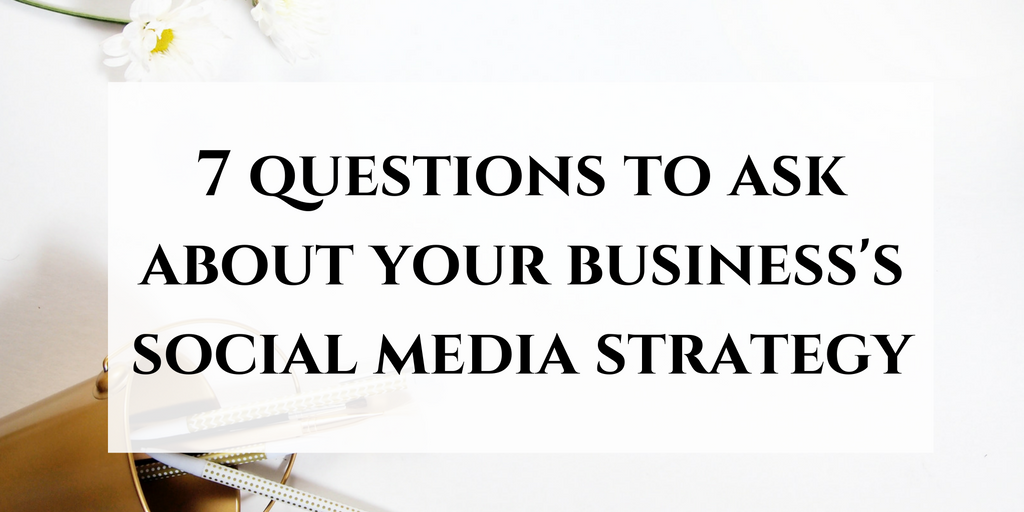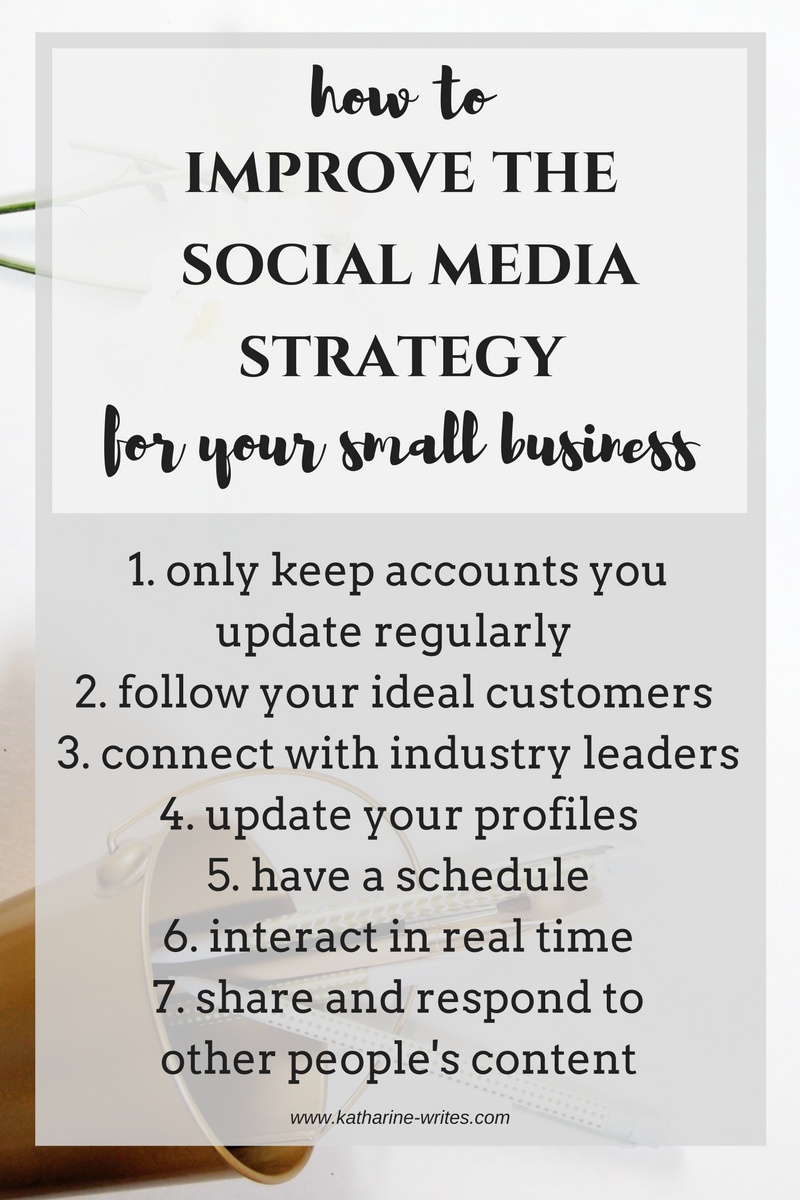
Today we’re wrapping up our look at that slow time every business experiences between December and January.
Depending on your type of business, your slow-down may happen before or after the holidays. And when it comes, it can leave you worried and anxious. After all, you need your small business to be booming, not lagging.
But instead of wasting your time panicking — because panic never helps anyone — this year, I’m encouraging you to take charge of your business and your time.
Use the slow time to improve your business structures, fix what isn’t working, and check off those little things that have been lingering on your to-do list all year.
We’ve already covered improving your website and stepping up your email marketing game in preparation for the new year.
Today, we’re talking about how to make better use of the marketing tool small business owners love to hate: social media.

1. Are there accounts you don’t update regularly?
If you have more than three social media accounts, chances are you don’t update all of them on a weekly, much less daily, basis.
That’s a problem. But the solution, in case that question suddenly made you panic, is not to spend loads more time on social media.
If you have accounts that you don’t update regularly, you probably need to just delete them.
You’ll do a better job of marketing on social media if you enjoy using the platform. And if you’re not updating something, chances are it’s because you don’t enjoy using it.
You might also like: Get More Out of Facebook Ads With One Small Change
So get rid of the dead weight and decide that in the new year you’ll spend your time and energy focusing on the accounts you actually enjoy and see a good return from.
(This is why I don’t have a Facebook page for my business, but you can find me on Twitter, LinkedIn, and Pinterest.)
The other solution? To hire someone to manage your social accounts for you.
Yes, outsourcing costs money. But if it (a) gives you back time you can better spend elsewhere, and (b) gets more eyes on your business, then that investment could be very worthwhile.
2. Where do your ideal customers spend their time?
The exception to the above advice?
If a platform is where a lot of your ideal customers spend their time, you need to make the effort, invest the time, and develop a presence there.
For example, if your target demographic is millennial women, you should have an Instagram account. If you want to connect with other business owners, you need to be on LinkedIn.
If you’ve just been thinking about yourself when it comes to social media, take some time in the next couple months to really brainstorm and learn about your ideal customers. Who are they? What platforms do they use? How do they interact with those platforms?
Craft your social media strategy around who you want to appeal to and connect with.
3. Have you connected with major industry players?
You probably already use social media to reach out to customers. But what about the leaders in your industry?
Every field, from floral arrangements to tech security, has leaders.
There are businesses that have huge name recognition and large customer pools. Thought leaders that drive innovation and are at the front of new developments. Experienced teachers that you can learn from.
You might also like: Is Your Small Business Making These Social Media Mistakes?
When you have down time, spend some of it researching who those leaders are. See what platforms they are on, then connect with them. Share their content. Respond to their questions. Tag them in your own posts. Learn from how they use their accounts.
Interacting with industry leaders is a great way to gain more followers, become known in your niche, and learn new strategies for effective social media use.
4. Are your profiles updated and interesting?
Remember, social media is part of your marketing strategy. that includes what is visible on your profile.
Your profiles should be consistent across platforms, with all relevant information filled out, and the colors and photos that you use should match the rest of your branding.
You should have a professional photo or logo as your avatar, and a banner that communicates information about your company. Your bio should be informative and searchable, with your website or a link to your email incentive easy to find.
Updated, interesting profiles will make your brand look more trustworthy and encourage other users to follow your accounts.
If your social media profiles are looking a little outdated or unprofessional, set aside a few minutes to update and energize them.
5. Do you have a schedule for what you share?
One of the biggest reasons clients tell me they don’t use their social media profiles is simply that they forget to.
Or that logging in every day, multiple times a day, takes way too much time.
Well, the good news is that you don’t have to do that. You can schedule social media posts days, weeks, or even months at a time so that your accounts are constantly updating and sharing new content without the need for you to spend hours on social media every day.
You might also like: 6 Things You Can Do Today to Connect on Social Media
Try tools like Buffer, Hootsuite, or TailWind which allow you to manage multiple accounts from a single publisher. You can also use add-on apps in your social media accounts to let you automatically share or reuse content, such as IFTTT, SocialOomph, or Dlvr.It.
There are tools out there that take away some of the slog of social media marketing.
So set aside a few hours to learn about which ones make the most sense for your business, then start using them!
6. Are you regularly logging on in real time?
Of course, you shouldn’t schedule or automate everything on social media.
Part of being on social media is being available. If someone shares your content, you want to be there to say thank you. If a customer asks a question, you need to log in and respond. If there’s a trending subject or relevant hashtag, you should be part of the discussion.
No, this doesn’t mean that you have to go back to spending all your time managing your social media accounts. But you, or someone else on your team, should log onto your accounts regularly and interact with people there.
Set aside a distinct time to do this. Maybe you give it half an hour a day, or one hour every other day.
Decide what makes the most sense for you, create a schedule, and stick to it.
7. How often do you share and respond?
Those hours you spend actually logging on in real time? It shouldn’t just be about your content.
If an industry leader poses a question, you want to answer and start a dialogue with them. If someone you follow has an interesting post, you should interact with it by sharing or commenting.
Social media, after all, is supposed to be social.
It’s a form of marketing, yes, but for a small business it’s marketing that’s about building relationships.
You might also like: How to Do Just About Anything Your Small Business Needs
Relationships aren’t created by one person engaging in a monologue that shuts everyone else out.
Relationships are created by dialogue, by sharing and listening and interacting. By engaging in communities, challenges, and chats. By checking and liking other people’s content just because.
Small businesses depend on relationships to grow. That’s just as true on social media as it is everywhere else.
As you create your new social media plan, be sure to set aside time to interact with other people’s content and start building relationships.

Leave a Reply